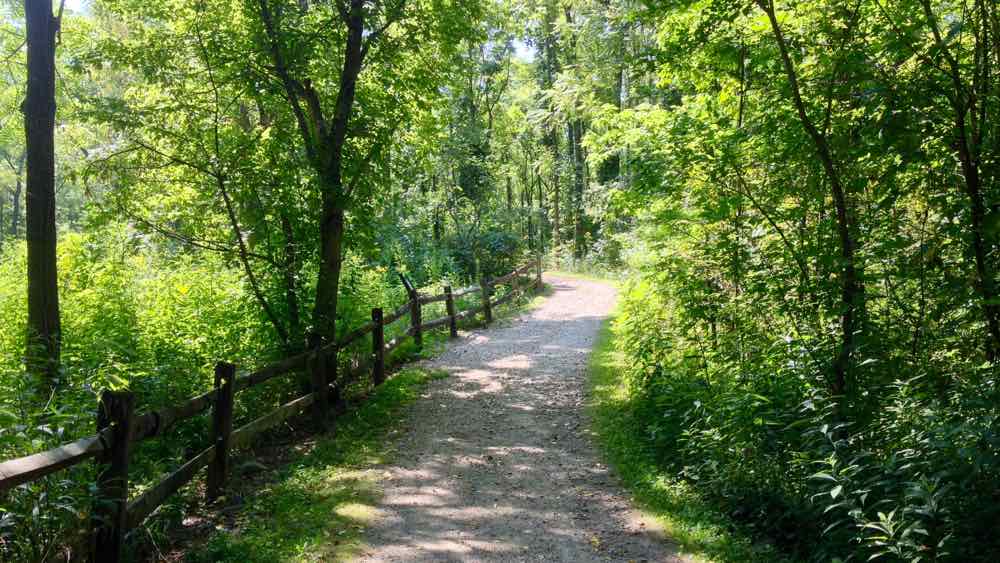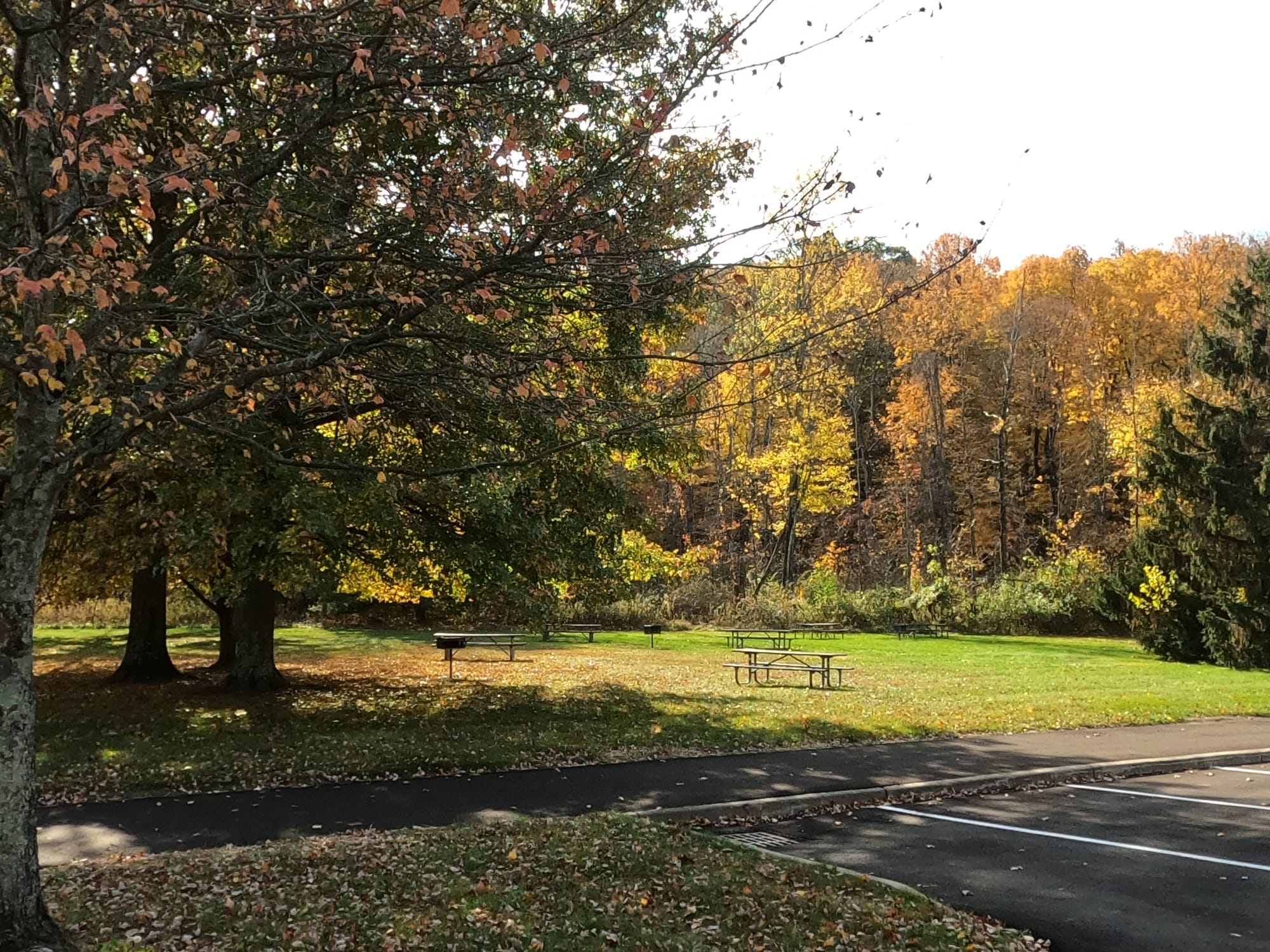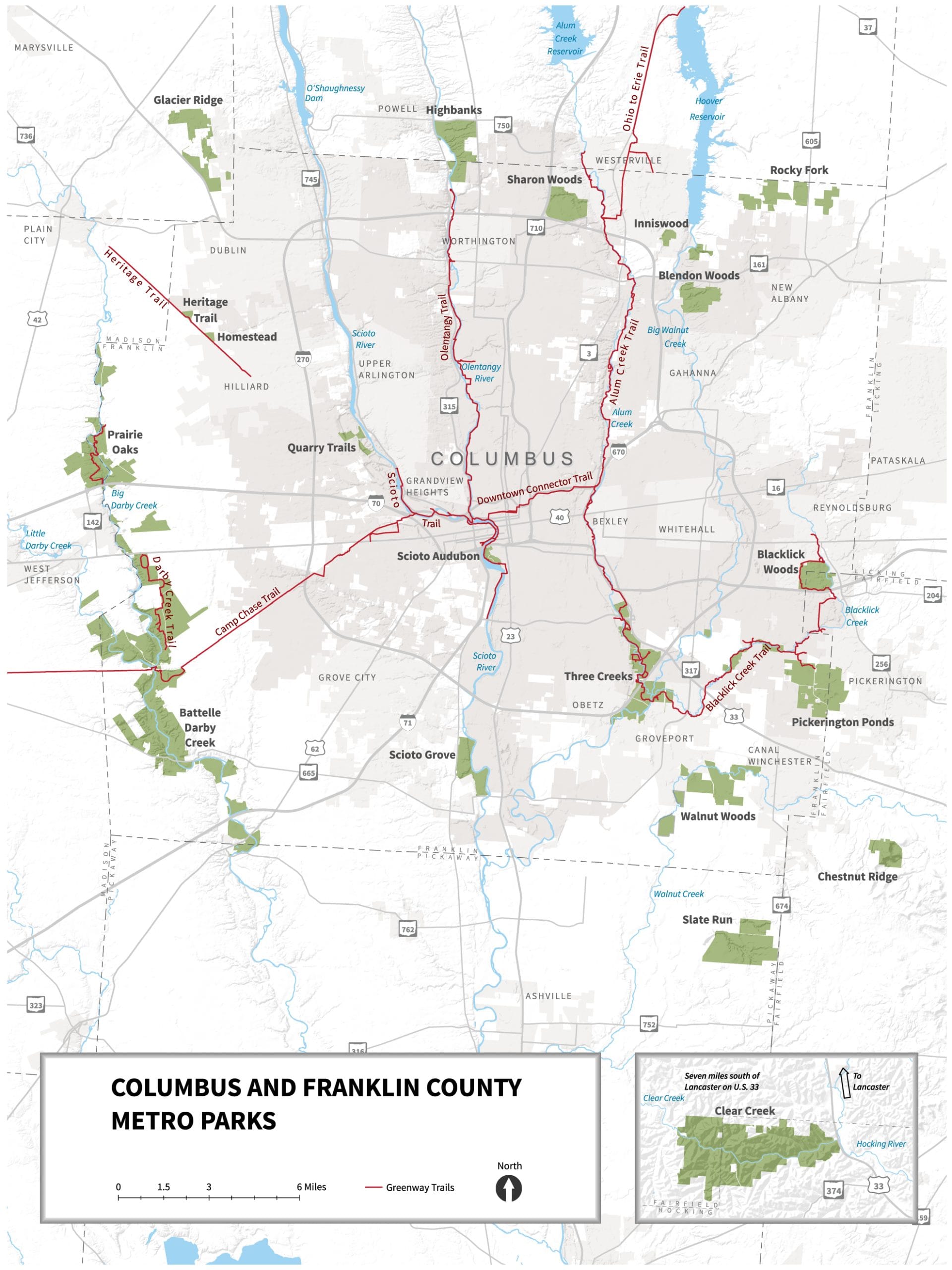Sharon Woods Metro Park, located in Westerville, Ohio, is the fourth park in the Columbus and Franklin County Metro Parks system.
The park is a mixture of forests and fields with towering oak, hickory and beech trees and an 11-acre lake. Tucked inside the 761-acre park is the Edward S Thomas State Nature Preserve, named for the renowned Ohio naturalist and one of the founders of the park system.

Origins and Early Development
The park's establishment was influenced by the rapid urbanization of the Columbus area in the mid-20th century. In 1962, the Metro Parks system began acquiring land for Sharon Woods to preserve natural spaces amid growing development pressures. By 1965, the park's boundaries were largely defined through 23 land acquisitions from farmers, private landowners, and developers. Sharon Woods Metro Park officially opened to the public in October 1968.
Edward S. Thomas State Nature Preserve
In 1975, a 320-acre area within Sharon Woods was designated as the Edward S. Thomas State Nature Preserve, named after the first chairman of the Metro Parks Board. This preserve features diverse habitats, including oak-hickory woodlands and swamp forests, and is home to some of Ohio's oldest trees, with certain oaks exceeding 250 years old.
Conference and Educational Center Before Park Opened
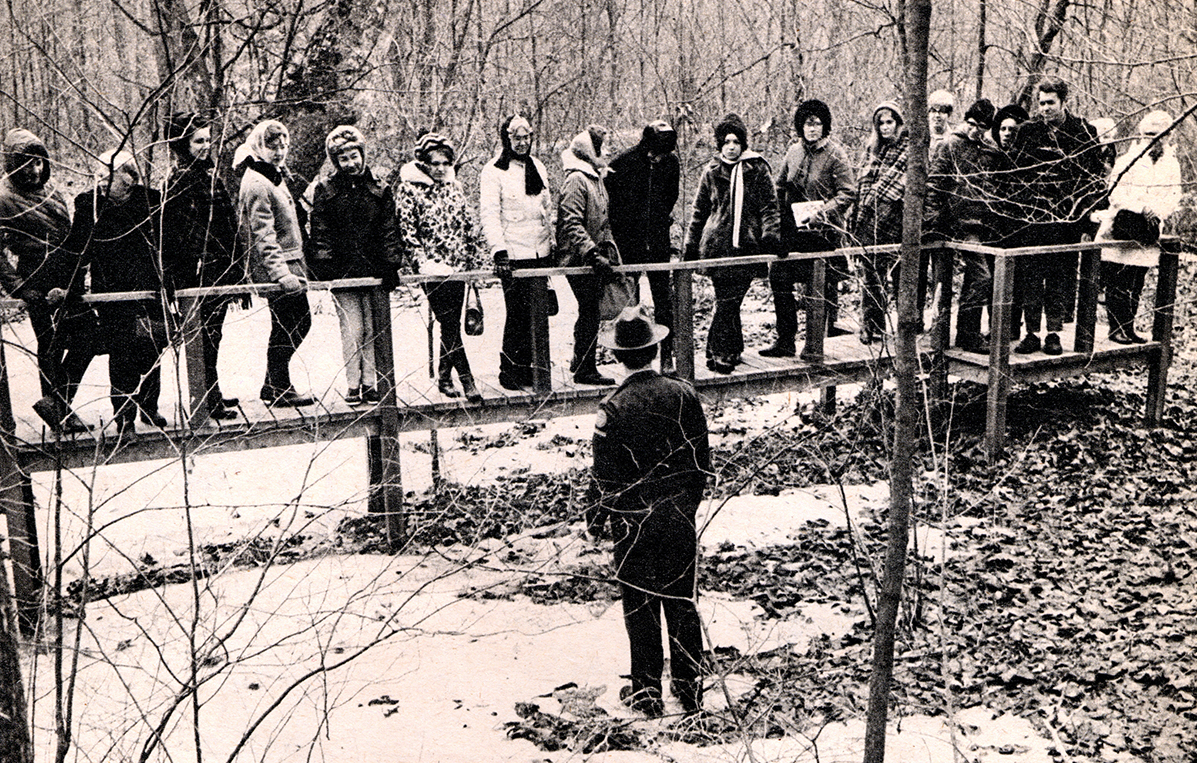
As early as June 1961, Metro Parks had developed a plan for a Conference and Outdoor Education Center, to be located on the land that it hoped to acquire soon in Westerville. The Spring Hollow Outdoor Education and Conference Center came into being. By 1964, reservations were being taken for this 150-acre area, to be used by camp groups, conservation organizations and other groups dedicated to outdoor education or the conservation of natural resources.
The headquarters for the Center were at Ninde House off Park Road in Westerville (this section of Park Road —named after Flint Park, at the junction of Park Road and Flint Road in Worthington— would later be renamed to West Main Street). Ninde House was a cottage that included an office headquarters, meeting rooms, a library and study hall, dining room and kitchen. It could also accommodate 10 beds in semi-dormitory sleeping rooms. Ninde House, after later improvements, would become Spring Hollow Lodge. A nearby residence hall, known as Dunn House, was also part of the Conference Center. It included meeting rooms, a kitchen and laundry, and semi-dormitory sleeping rooms for 26 more beds. Later on, Dunn House would be remodeled and become Metro Parks Headquarters.
Interstate Freeways
Sharon Woods Metro Park is linked with plans to build two major Interstate freeways. The preservation or restoration of natural areas was always a guiding principle of the Metro Parks mission. Plans were developed in the late 1950s for both a freeway connecting Cincinnati, Columbus and Cleveland along the Ohio portion of its route (the future I-71), and for the so-called Columbus Outerbelt, the 55-mile-long loop of I-270.
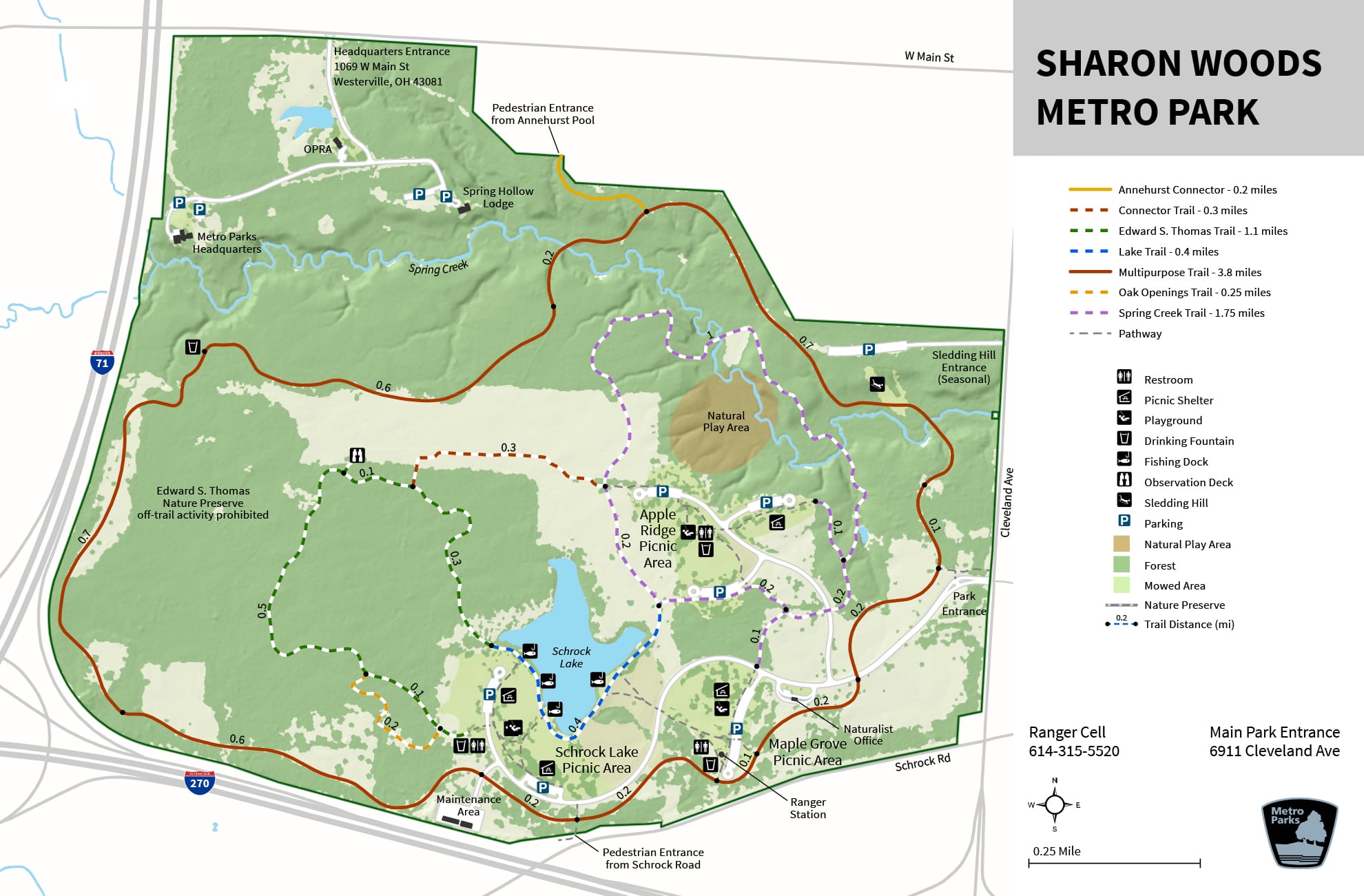
A map of Sharon Woods Metro Parks shows how it is bordered by I-71 to the west and I-270 to the south. The creation of I-270 was expected to generate massive development and expansion in the area, as indeed happened. Work began on the construction of I-270 in 1962. The section between I-71 and Cleveland Avenue opened officially in November 1966. Parts of I-71 were also established in Ohio in 1962.
Schrock Lake
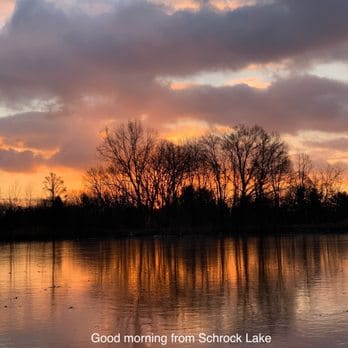
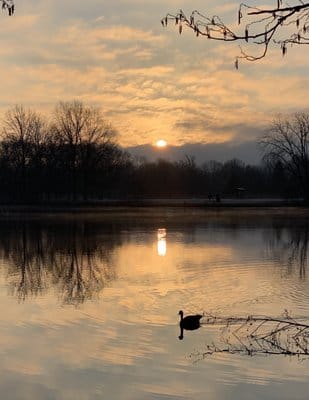
.jpg)
Engineers working on construction of the new interstates found themselves in need of huge amounts of soil to grade an interchange between I-71 and I-270 at the southwest corner of the future Sharon Woods. In 1965, they asked Metro Parks for permission to take the needed dirt from park land nearest to the interchange. Metro Parks agreed permission for the engineers to acquire the dirt, but insisted on a location in a more central area of the park. And so, a borrow pit was dug, which became the foundation for the future Schrock Lake. Metro Parks constructed a small dam and spillway, to raise water levels, and shaped the shoreline of the lake with various inlets and coves to create inviting habitat for various species of wildlife.
Cottonwoods, cattails, reeds and willows were planted along certain sections of shoreline to further enhance the appeal to wildlife. The 11-acre Schrock Lake quickly attracted animals, with muskrats discovered to be living in lodges amidst the cattails on the banks, and mink seen swimming in the lake or emerging from the shores. Geese are plentiful. Wood duck nesting boxes were installed in the north end of the lake, along with a large purple martin house. Both were successful in attracting these colorful species to the lake, along with dozens of other species of migratory waterfowl.
.jpg)
Recreational and Educational Features
Over the years, Sharon Woods has evolved into a multifaceted recreational destination. The park offers a variety of trails, including the 3.8-mile paved Multipurpose Trail, the 1.8-mile Spring Creek Trail, and the 1.1-mile Edward S. Thomas Trail. These trails wind through forests, fields, and along Schrock Lake, providing opportunities for hiking, biking, and wildlife observation.
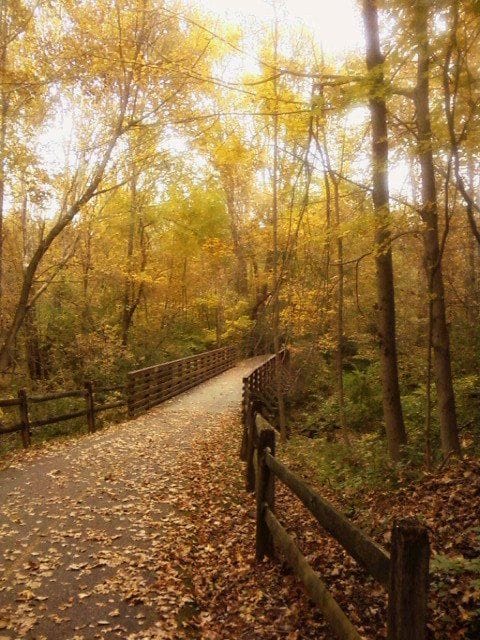
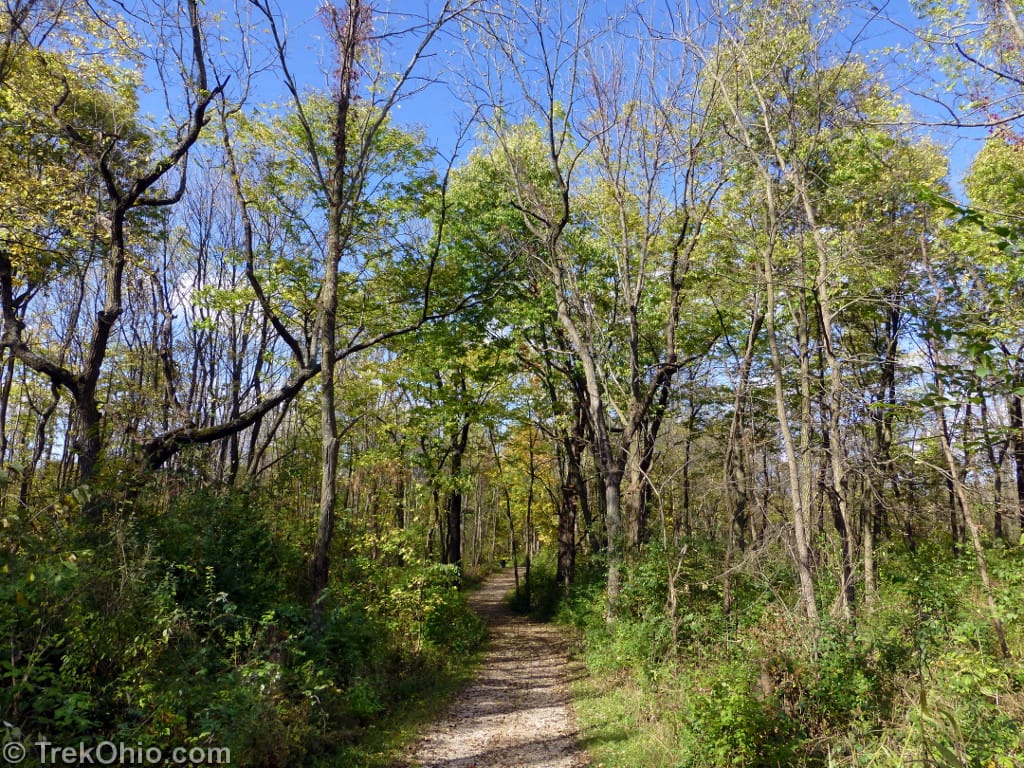

.jpg)
.jpg)
Hiking Trails
Edward S Thomas
1.1 miles
Easy – Hike – Gravel – ADA
Winds through a state nature preserve and past large burr oaks and an observation deck.
Spring Creek
1.8 miles
Easy to moderate – Hike, Pets – Gravel
Crosses two steep hills, runs alongside Spring Creek and goes through a forest.
Multipurpose
3.8 miles
Moderate – Hike, Bike – Paved – ADA
Loops around the park and passes through woods and fields.
Lake
0.4 miles
Easy – Hike, Pets – Paved
Runs around the southern half of Schrock Lake. Connects Spring Creek and Edward S Thomas trails.
Oak Openings
0.2 miles
Easy – Hike – Gravel – ADA
Goes through a forest and fields and connects with the Edward S Thomas Trail.
Connector
0.3 miles
Moderate – Hike – Grass
Connects the Spring Creek and Edward S Thomas trails.

Conclusion
Sharon Woods continues to serve as a vital green space for the Columbus area, balancing recreational use with conservation efforts. The trails are well-maintained. I have walked at Sharon Woods Metro Park many times and it is always enjoyable. It is worth a visit.


